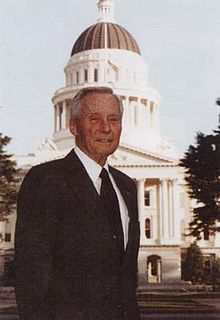This article needs additional citations for verification. (May 2020) |
William J. Knight | |
|---|---|
 | |
| Member of the California Senate from the 17th district | |
| In office December 2, 1996 – May 7, 2004 | |
| Preceded by | Don Rogers |
| Succeeded by | George Runner |
| Member of the California State Assembly from the 36th district | |
| In office December 7, 1992 - November 30, 1996 | |
| Preceded by | Tom McClintock |
| Succeeded by | George Runner |
| Personal details | |
| Born | William J Knight November 18, 1929 Noblesville, Indiana, U.S. |
| Died | May 7, 2004 (aged 74) Los Angeles, California, U.S. |
| Nationality | American |
| Political party | Republican |
| Children | Steve Knight, 2 other |
| Other names | Pete Knight |
| Alma mater | Butler University Purdue University Air Force Institute of Technology, B.S. 1958 |
| Occupation | Test pilot |
| Awards | |
| Space career | |
| USAF astronaut | |
| Rank | |
| Selection | 1960 Dyna-Soar Group 1 |
| Missions | X-15 Flight 190 X-15 Flight 188 |
William John "Pete" Knight (November 18, 1929 – May 7, 2004) (Col, USAF) was an American aeronautical engineer, politician, Vietnam War combat pilot, test pilot, and astronaut. He was one of twelve pilots who flew the North American X-15, an experimental spaceplane jointly operated by the U.S. Air Force and NASA. He was also selected for participation in the X-20 Dyna-Soar program.
On October 3, 1967, Knight piloted X-15 Flight 188, the program's fastest flight. Flying at a maximum Mach of 6.7 and a maximum speed of 4,520 mph (7,274 km/h), he set a speed record for flight in a winged, powered aircraft.[1] The flight was made in the X-15A-2, the second of three planes in the X-15 fleet.
Two weeks later on October 17, Knight flew X-15 Flight 190, reaching a maximum altitude above 50 miles. This qualified him as an astronaut according to the United States definition of the boundary of space. However, this altitude did not surpass the Kármán line, the internationally accepted boundary of 100 kilometers (62 miles).
- ^ "Fastest Speed in a Non-Spacecraft Aircraft". Guinness World Records. Guinness World Records Limited. Retrieved 13 November 2014.